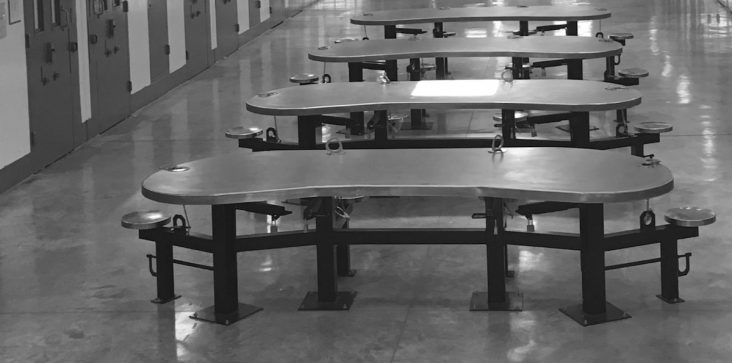Arkansas inmates making medical masks; COVID-19 modeling estimates 619 deaths
by April 2, 2020 3:38 pm 4,934 views

Arkansas Department of Corrections Secretary Wendy Kelley said Thursday (April 2) that state inmates will make at least 80,000 masks to be distributed to corrections staff and prisoners and where needed in Arkansas medical facilities.
Personal protective equipment (PPE) supplies have been in short supply not only in Arkansas but around the country as healthcare workers are forced to use more equipment than normal in response to COVID-19. Kelley said inmates have already made about 1,000 for use in the prison system, and she will work with the Arkansas Department of Management to distribute excess masks to Arkansas hospitals and other medical facilities in need.
Gov. Asa Hutchinson said the state has received 70% of its request from the national emergency stockpile, and PPE acquired by the state on the open market is now arriving and more will come in the next few weeks. He said state officials have worked with individuals and companies in the supply chain to find secure sources.
“I feel much more comfortable today on that supply chain of protective equipment,” Hutchinson said Thursday.
Kelley said the department is taking several measures to prevent the spread within the system, including screening corrections employees before they come to work, and suspending in-person visitation. Kelley also said only one staff member has tested positive for COVID, and no inmates have tested positive. However, when asked by a reporter, Kelley said only two inmates have been tested.
Gov. Hutchinson spent much of Thursday’s press conference defending his decision to not issue a stay-at-home, aka, shelter-in-place, order. His remarks largely mirrored that from an NPR interview he gave earlier in the day.
“If we have to do that, we will,” he said during the NPR interview. “All you’re really accomplishing [with stay-at-home orders] is a very narrow sliver of businesses that you’re going to prohibit in the retail sector… The broad brush, I don’t think, is as effective as the targeted approach.”
ARKANSAS COVID-19 CASES
COVID-19 cases in Arkansas totaled 643 as of Thursday afternoon, up from 584 on Wednesday. The number of deaths rose from 10 to 12. (The positive case number was up to 683 by Thursday night.) The number of COVID-19 patients hospitalized in Arkansas was 66 on Thursday, up from the 56 on Wednesday. As of Thursday at 1 p.m., there were 226,374 U.S. cases and 5,316 deaths. Globally, there were 981,221 cases and 50,230 deaths.
Arkansas Secretary of Health Dr. Nate Smith said the state is seeing good results in flattening the curve of COVID-19 spread. However, Gov. Hutchinson and Smith have said the state continues to lag behind where they hoped to be with testing. As of noon Thursday, the state reports that 8,461 COVID-19 tests have been conducted in Arkansas, just 0.28% of the population.
Following are the five counties with the most COVID-19 cases as of Thursday afternoon.
• Pulaski: 113
• Cleburne: 63
• Jefferson: 49
• Benton: 40
• Faulkner: 36
ARKANSAS COVID MODELING
Modeling from the Institute for Health Metrics and Evaluation at the University of Washington shows Arkansas reaching “peak resource use” on April 26. The modeling says the state will need 2,031 hospital beds, but with 5,005 available, there will not be a shortage. It’s the same for intensive care unit (ICU) beds, of which 305 will be needed at the peak with 394 available. The institute report does not indicate if hospital and ICU beds needed will match the location where they are available. The report also shows 244 ventilators will be needed at the peak.
The institute modeling either predicted the state would be hit harder by COVID-19, or state actions to control spread of the virus are working because the model has the state needing 346 beds for COVID-19 patients on April, and 56 ventilators. The state reported 66 hospitalizations and 23 patients on ventilators on April 2.
Deaths in Arkansas are expected to reach 619 by Aug. 4, with the virus spread contained by mid-June, according to the modeling.
